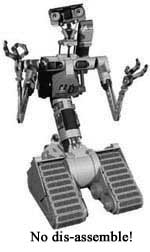
Turning is a Subtractive Process - you cut away everything that isn't what you want to end up with. It's like carving an elephant. You just keep cutting away stuff 'til you're left with an elephant.
Want a bowl? Turn 'til only the bowl you had in mind is left - then stop turning.
That works - but . . . you're thinking in terms of a whole, discrete, turned object.
BUT . . .
WHAT IF
- you don't stop when you've turned a WHOLE object?
WHAT IF - you cut up the piece and play with the pieceS?
WHAT IF
- you sliced it up - into bracelets - and a small plate?
..and then
- stacked the parts in a different order parallel to each other?
. .or
- stacked them, but with some "on edge" sitting inside some oriented "normally"?
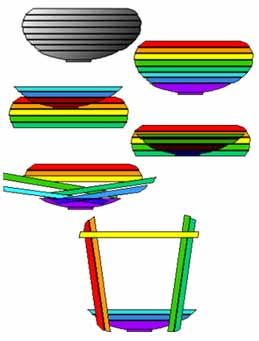
What if you just slid the slices?
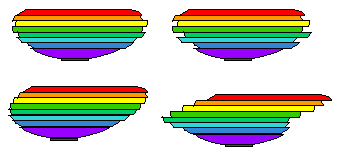
How about Rings In Rings?

WHAT IF
- you just cut the bowl in half - vertically - rotated one half - in either direction - and put the two halves back together?
..or
- put the two halves together - back to back
..or
- facing each other but one slid foreward and one slid backward
..or
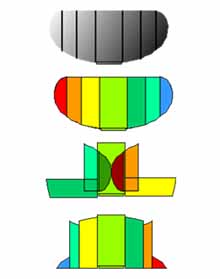
WHAT IF
- you cut several bowls with about the same shape and size in half
. then
- nested them, one in the other
. and then
- "fanned" them - on a curve
. then
- turned the whole assembly to stand upright
. or
- flipped the fanned, nested group over - face down?
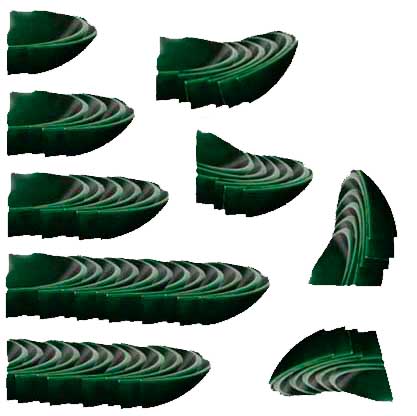
Got any Pop Rivets?
Now - what if - you "pinned" each half to the previous half - in such a way that each half could rotate a little relative to the other half on those two pivot points / hinge? Now you have something you - and anyone else who wants to pick it up - and play with it - to make your / their own variations of a form.
And you don't have to actually turn a bunch of bowls and actually slice them up to play with this sort of slice and re-assemble idea. There are plenty of free or relatively inexpensive "photo manipulation" programs available. The illustration above was done in an old copy of PhotoShop, but could have been done in Adobe's $70 PhotoElements 6 or later and probably could be done with a program that comes free with digital cameras - or printers / scanners. When you come up with something you think might be interesting - THEN - make the parts and put them together.
Here's an interesting piece by UK turner Bob Chapman that uses this Dis-Assemble Re-Assemble idea in a very refined and highly skilled way. To see more of his pieces click here
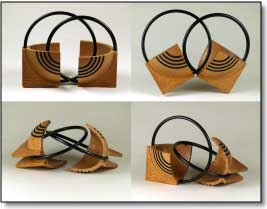
How about a Femisphere? These are by Peter Rand, a researcher by day - and a very creative turner nights, weekends, holidays and vacations. He also has been using actual movement in many of his turned pieces apparently for quite a while.
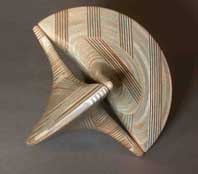
Variations? This one has little magnets in the ends of the "fingers"
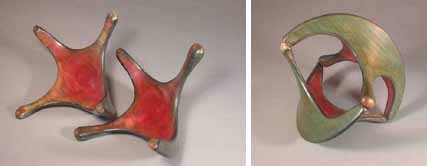
There's a whole family of forms that use this idea of turn - take apart - reorient - put back together - idea.
Want to see some examples of this Dis-Assemble / Re-Assemble aproach - taken to amazing extremes? Spend some time studying some of these works by Malcom Tibbett at his web site www.tahoeturner.com
NOW are any interesting ideas starting to pop around in your brain?
No?
You may be thinking "That's interesting - but - sawing up shapes that want to roll around ain't exactly a trivial thing - and running bandsaw blades don't like to cut things that move around while being cut. And running bandsaws don't care what they cut - fingers or wood - they're all the same to the bandsaw's teeth."
Well . . . there IS a way to avoid having to bandsaw a piece up - and still get the pieces you need. It's called the Paper Joint.
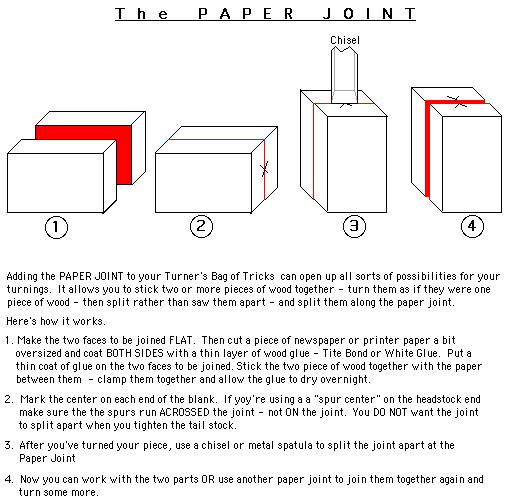
Still not interested?
OK - how about this dis-assemble / re-assemble idea?
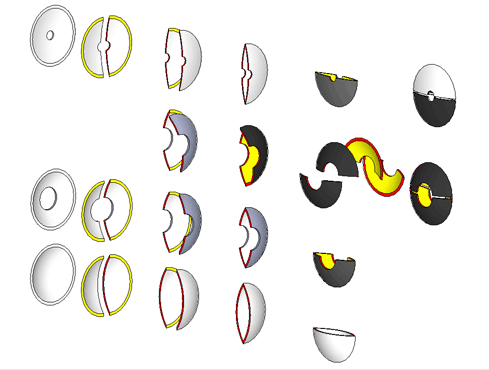
Here are a few examples of Alan Carter pieces that will give you a feel for what CAN be done with THIS idea.
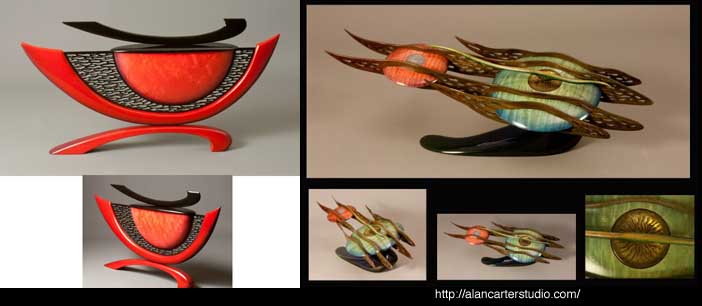
That's OK. The Dis-Assemble / Re-Assemble idea has gotten into your brain already and somewhere back there it'll get played with - even though you won't be aware that that's what's happening. After a while something will come to you - and it may seem like the idea came out of nowhere. It didn't. You just SYNTHSIZED stuff already in your head. The more things that part of your brain has to play with - the more combinations it can find. And one of those combinations may be a great idea for your next trip to the lathe.